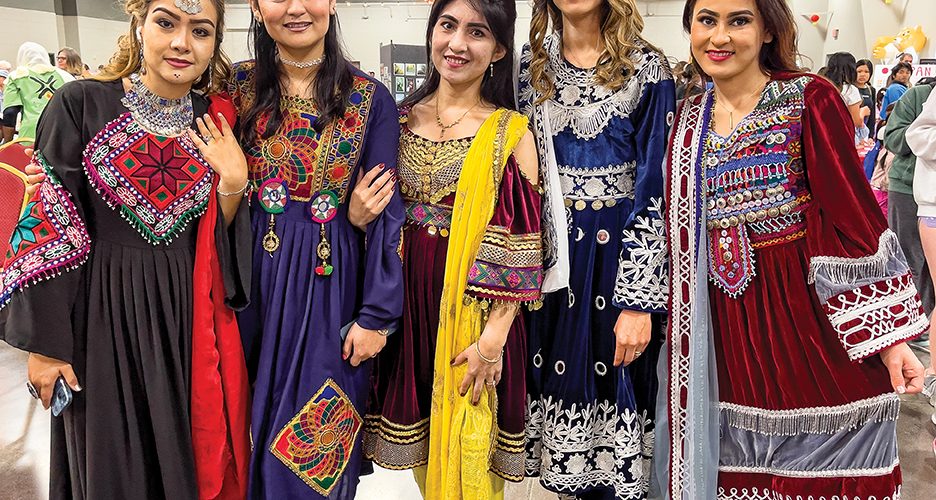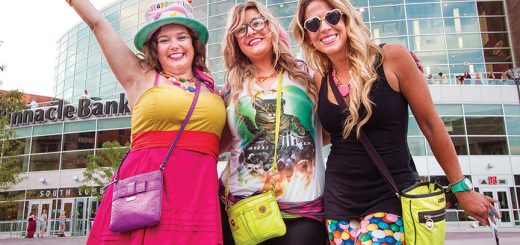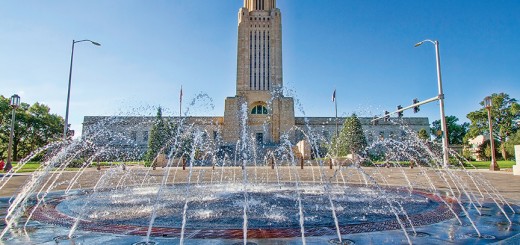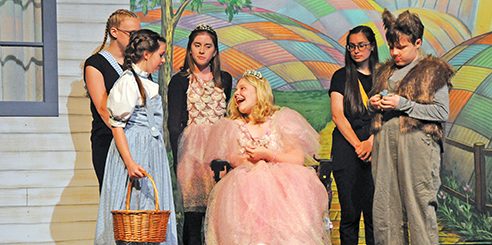Lincoln’s Culture Centers

by Sriyani Tidball
Lincoln’s culture has changed dramatically in the past decades, as it is home to many cultures, who also have their own centers. These are not only a tool to help the many immigrants and refugees who call our welcoming city home, but also a celebration of how wonderfully diverse our city is.
The growth and influx of recent immigrants is having a notable impact on Lincoln communities. Refugees and immigrants, breathe new life into urban communities by establishing businesses, sharing their culture, and revitalizing neighborhoods. In the 1980s the refugee population began to increase in Lincoln and Lancaster County. According to the Asian Community Center, Lancaster County is the nation’s 18th largest resettlement area for Asian refugees and immigrants.
In the recent months, Lincoln has welcomed large groups of refugees from both Afghanistan and Ukraine, and now helping the families economically and socially with their resettlement. Nebraska has become fifth in refugee resettlement per capita when compared with states of similar population. For the last two decades, half of the state’s refugees have resided in Lincoln, making our community rich in culture.
Asian and Latino stores, markets and restaurants, have brought new economic vitality to some neglected areas. As a result of these ethnic enclaves, Lincoln residents can easily find a good falafel sandwich, a bowl of pho, or yummy bubble tea. Today in Lincoln unusual, ethnic vegetables are mainstream at ordinary supermarkets. When it comes to ethnic restaurants, Lincoln boasts of many, wonderful options. If you crave Indian food, you can choose from many different sophisticated Indian restaurants (I love The Oven). Or if it is Thai, we have four restaurants, (my favorite is the Blue Orchid downtown). We also have multiple Korean, Japanese, Vietnamese, African, Middle Eastern, and genuine Mexican restaurants dotting the city. Lincoln supports diversity, culture and now—international cuisine.
The Lincoln Public Schools boast that more than 30 different language groups are represented at the elementary level. To add to this, you can learn Spanish at the Hispanic Community Center, Lakota at the Indian Center, and Chinese, Japanese, Russian or a host of other languages at the University of Nebraska-Lincoln (UNL). Often, when you walk through a department store, you hear people speaking Iraqi, Vietnamese, French or Sudanese. University of Nebraska-Lincoln (UNL) educates thousands of foreign students from many different nations adding more variety to Lincoln’s international mix.
The University of Nebraska-Lincoln (UNL) boasts of the state-of-the-art, Jackie Gaughan Multicultural Center that showcases the importance of diversity and culture in education. The center champions many cross-cultural events during the year that are open to students and the Lincoln community. It is located right next door to the Nebraska Student Union. It facilitates multicultural programming with student lounges, a computer lab, meeting rooms, a large multi-use area, student offices, tutoring rooms and space for faculty, staff and students dedicated to diversity and multicultural programming. For more information on the Gaughan Multicultural Center and related events, go to unions.unl.edu/jgmc.
Some of Lincoln’s more established ethnic groups also have their own community centers that are not exclusive, but rather inclusive in sharing their differences with others. Here are some of the more prominent community centers in the city.
The Indian Center, Inc. was formed in 1969 to provide services to Nebraska’s Native Americans and other Lincoln residents in the areas of food commodities, housing, culture, employment, and health.
The center, known for its generosity, offers free lunch for anyone in need who comes through the front door. Its Senior Center, open Monday through Friday, 8 a.m. to 2 p.m., highlights specific programs for seniors. They offer special projects tailored for youth empowerment, that include Indian child welfare, Native American Junior Achievement, and summer youth programs. Other activities include an art exhibit and Lincoln pow-wows. Every summer the center has a wonderful pow-wow that is fast becoming a beloved Lincoln tradition. The center uses volunteers in its employment/training programs to help locate jobs in the community for the unemployed. WIA (Work Investment Act) and Lakota Language. Since its inception, the Indian Center has proven to be an integral and vital part of the City of Lincoln’s human service network serving not only Native Americans but non-Natives as well. For more information visit indiancenterinc.org
Clyde Malone Community Center has long fought for civil rights and works to improve the lives of African American residents of the Malone, Clinton, and Hartley neighborhoods in Lincoln, while creating unity and prosperity throughout Lincoln, and honoring African American heritage. Strengthening family unity is the goal of many Malone programs. The center offers childcare, intervention programs for children at risk that include reading and writing assistance for elementary age students. Malone also provides substance abuse programs for elementary and secondary students, plus transportation to its after-school programs.
In late November, the center reaches 1,700 Lincoln/Lancaster County families with Thanksgiving baskets assembled by volunteers. The Thanksgiving project is the center’s biggest volunteer effort. For more information, check out www.malonecenter.org
El Centro de las Americas was created in 1982 and was originally operated from the home of a parishioner in Lincoln’s Spanish-speaking Catholic community. The current center offers educational and cultural activities. Thousands of people visit the center each year for services including emergency assistance, food, clothing, employment, empowerment, and educational opportunities. The center also provides a summer lunch program for children ages 18 and younger, bilingual mental health outreach and substance abuse programs, candidate forums, special tutoring and motivational programs for Hispanic high school students. Each September, their annual Hispanic Heritage Festival is one of the special events in the city. The center is very welcoming and if Spanish is your first language, this is a wonderful place to hang out in. For more information check out their website at www.elcentrodelasamericas.org
Asian Community and Cultural Center serves both Asian refugees and established members of Lincoln’s fast-growing Asian population.
To help new refugees become self-sufficient as they integrate into their new homes here in Lincoln, the center offers the Fusion Project. The Fusion Project works together with the different refugee groups, so they can build an educated and culturally rich community for all of Lincoln’s residents.
In addition to the Chinese Tai Chi Chuan (martial arts) classes, the Japanese Aki-Matsuri Fall Festival, and the Lion Dance Troupe (a traditional dance form), the center has developed programs that share all aspects of Asian cultures. Most of the volunteers are bilingual high school and college students who offer their services on a flexible schedule. For more information check out their website at www.lincolnasiancenter.org
Located at 300 N. 27th, the Yazidi Cultural Center is part of a larger national organization called Yazda, dedicated to providing a loving community to the Yazidi refugees. Its presence in Lincoln has helped it become home to the largest community of Yazidi refugees in the world, and the small team at YCC has been helping to teach basic American rights and prepare them for citizenship. The team also provides English and Kurmanji (Northern Kurdish) classes to integrate refugees into Lincoln while helping them stay connected to their own.
Many of the newer ethnic communities have formed their own cultural groups and often meet in local churches. If you are looking to find a community that you would like to know more about, a good place to start would be the Lincoln Public Schools. I believe there are over 30 different nationalities being represented there and many have organized school events.
If you are looking for a way to be a part of Lincoln’s diversity, check out two of Lincoln’s cross-cultural organizations; the Cultural Centers of Lincoln Collaborative (culturalcentersoflincolncollaborative.com/) and the Good Neighbor Community Center (togetheronelincoln.org/good-neighbor-community-center/) that aims to build bridges that connect community through social services, public resources and cross-cultural relationships while providing culturally sensitive services.




Recent Comments